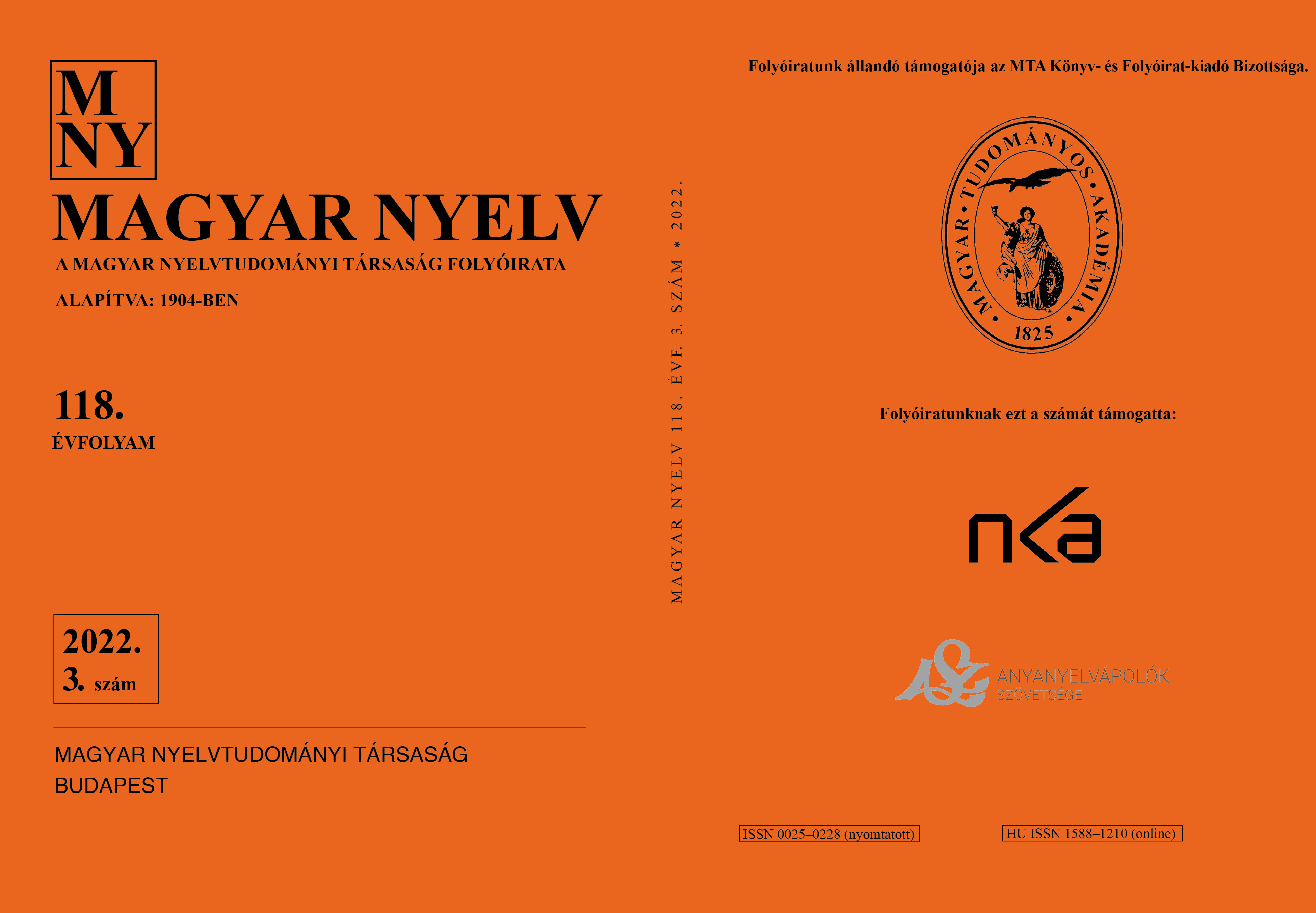The proportion of F0 changes in the falling contours of Hungarian spontaneous declarative utterances
DOI:
https://doi.org/10.18349/MagyarNyelv.2022.3.317Keywords:
intonation, standardization, falling melody, declarative utterances, spontaneous speechAbstract
The aim of the study is to analyse which position presents the most radical tonal movement among the full falling and half falling melodies in declarative utterances of Hungarian spontaneous speech. In this research, 300 declarative utterances from 60 non-smoking young Hungarian adults were analysed, based on the Melodic Analysis of Speech model by Cantero & Font-Rotchés, the central element of which is melody standardization. According to the results, as also seen in data from previous literature, the fall from the first stressed syllable to the next syllable is more significant than in the case of the tonal movements between other syllables; the fall is more prominent from other stressed syllables to the next syllable than from unstressed syllables, but from the last stressed syllable to the next syllable this fall is not significantly larger. Results also reveal that in spontaneous speech the proportion of certain sustained melodies (rising and level) at the end of the sentence can exceed even the proportion of the falling ones.
Downloads
Published
Issue
Section
License
Copyright (c) 2022 Kata Baditzné Pálvölgyi

This work is licensed under a Creative Commons Attribution-NonCommercial-NoDerivatives 4.0 International License.
Magyar Nyelv is a Diamond Open Access periodical. Documents can be freely downloaded and duplicated in an electronic format, and can be used unchanged and with due reference to the original source. Such use must not serve commercial purposes. In the case of any form of dissemination and use, Hungarian Copyright Act LXXVI/1999 and related laws are to be observed. The electronic version of the journal is subject to the regulations of CC BY-NC-ND (Creative Commons – Attribution-NonCommercial-NoDerivatives).
The journal permits its authors, at no cost and without any temporal limitation, to make pre-print copies of their manuscripts publicly available via email or in their own homepage or that of their institution, or in either closed or free-for-all repositories of their institutions/universities, or other non-profit websites, in the form accepted by the journal editor for publication and even containing amendments on the basis of reviewers’ comments. When the authors publicize their papers in this manner, they have to warn their readers that the manuscript at hand is not the final published version of the work. Once the paper has been published in a printed or online form, the authors are allowed (and advised) to use that (post-print) version for the above purposes. In that case, they have to indicate the exact location and other data of the journal publication. The authors retain the copyright of their papers; however, in the case of an occasional secondary publication, the bibliographical data of the first publication have to be included.



